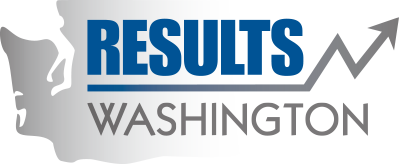Archived: Postsecondary graduates from public community and technical colleges who during the 3rd quarter after graduation are either enrolled in postsecondary education or training or are employed in Washington
Data source: State Board for Community and Technical Colleges' (SBCTC) Data Warehouse
As reported in the Washington State Student Achievement Council's A Skilled and Educated Workforce 2015 update report to the Legislature, employment projections in Washington for 2018-2023 show a robust demand for workers with postsecondary education. As businesses, industries, and workplaces become increasingly complex, employers need workers with skills and education that allow them to adapt and excel in evolving environments. More than three-quarters of all projected job openings will require at least some education beyond high school, with two-thirds requiring mid-level education or higher.
Forty percent of all bachelor’s degree graduates in the class of 2011 started at community and technical colleges, according to our 2013 report on our part in the role of transfer students earning a baccalaureate degree in a public institution. The report found that transfer students graduated with virtually the same number of credits as those who started as freshmen at the four-year institutions, without many excess, unused credits – an indicator of the smooth transfer between two-year and four-year colleges. GPAs are similar as well. We are responsive to the needs of industry and our economy by training students for good jobs available right now in communities and growth industries around the state, like advanced manufacturing, cyber security, health care, and robotics. Apprenticeship programs: Nine months after leaving college, 94 percent of the students who finished apprenticeship programs in 2014-15 were employed, with a median wage of $34/hour.
- In 2016 our system embarked on a major initiative, Guided Pathways, with generous support from College Spark Washington and other funders. College students are often not sure how to navigate an educational path to a degree, transfer or career. As a result, they can get overwhelmed, drop out or waste valuable time and money on courses without earning a credential.
- Guided pathways aims to address this issue by reducing and simplifying the number of choices a student must make from college entrance to program selection to degree completion. Essential practices include:
- Clarify paths to student end goals (metamajors).
- Help students choose and enter a pathway (onboarding).
- Help students stay on a path ( advising and monitoring).
- Ensure that students are learning (learning outcomes).
http://www.sbctc.edu/colleges-staff/programs-services/student-success-center/guided-pathways.aspx
Businesses can help by getting involved with local program advisory committees and by providing work-based learning and internship opportunities.
Recognize that there are many well-paying jobs that require various levels of education, including certificates, associate degrees, bachelor’s degrees and beyond. Washington Community and Technical Colleges Field Guide: http://www.sbctc.edu/resources/documents/about/facts-pubs/field-guide/2017/2017-field-guide.pdf
The report A Skilled and Educated Workforce is available on the Washington State Student Achievement Council's website at: http://www.wsac.wa.gov/ and The Role of Transfer in the Attainment of Baccalaureate Degrees at Washington Public Bachelor's Degree Institutions Class of 2011 is available at: http://www.sbctc.ctc.edu/college/education/13-5TransferStudy_000.pdf
